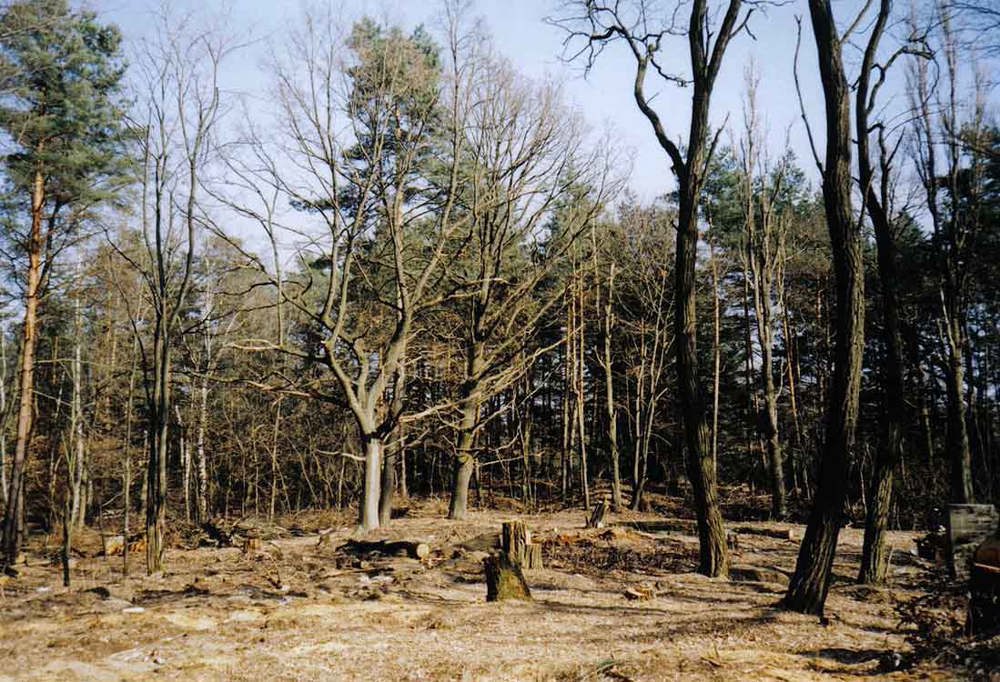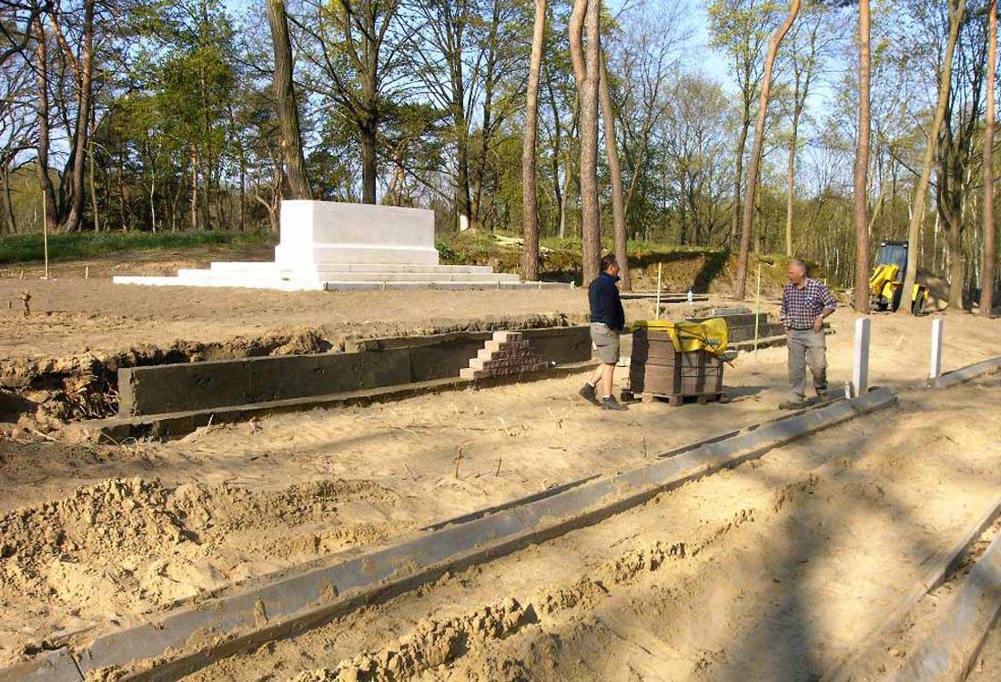01 September 2025
5 Unique & Unusual Commonwealth War Graves cemeteries & memorials
With over 23,000 locations in 150 countries, CWGC cemeteries and memorials have a character all their own. But did you know some of our sites are more unique and unusual than others?
Unique & Unusual Commonwealth War Graves cemeteries & memorials
Cape Town Labour Corps Memorial
Inaugurated in January 2025, the Cape Town Labour Corps Memorial is the newest memorial built by Commonwealth War Graves, and one of the most visually unique too.
It stands as a memorial to those casualties who served in all South African Military Labour Regiments and who died on the continent of Africa, or at sea in the South Atlantic or Indian Oceans between 3 August 1914 and 31 August 1921, and who have no known grave.
More than 1,700 South Africans who served in non-combat roles and perished with no known grave or commemoration are commemorated by the Cape Town Labour Corps Memorial.

South African architecture practice Dean Jay Architects designed the memorial’s immersive, eye-catching aesthetic, which features many nods to South Africa and its people. The posts, for example, are made from African Iroko wood and sit on bases carved from South African Rustenburg granite.
South African Labour Corps casualties with no known grave are individually commemorated by name on one of the symbolic Iroko posts. These are arranged in Zones and Avenues, each post having a unique number and bearing the service details of one casualty.
At the centre of the Memorial is a stone podium bearing a ground-level dedicatory text in Xhosa, Afrikaans and English.
The concept has been brought to life by talented South African craftspeople and specialists.
Thousands of South Africans served in non-combat roles supporting British and imperial forces, as the sides fought for former colonial territories across the continent of Africa in the Great War. These military labourers carried food and ammunition, managed logistics, maintained roads and railways, and built defences to keep the East African campaign supplied.

Although there were many volunteers, others were pressured into service, with local authorities leaning on magistrates and chiefs to raise the strongest men in villages and towns. Conditions were harsh. Many died far from home, largely from illnesses like malaria, dysentery, pneumonia and tuberculosis, but it was also dangerous toil that saw accidents and injuries.
The Cape Town Labour Corps Memorial is the first memorial to be delivered by CWGC’s Non-Commemoration Programme, a multinational programme that addresses previous inequalities in commemoration.
Kohima Military Cemetery
Did you know Kohima War Cemetery is the only CWGC cemetery to feature a tennis court?
In early 1944, in Burma (present-day Myanmar), Imperial Japanese forces crossed the Chindwin River and into India. The invasion focused on two key points near the Burmese-Indian border: Kohima and Imphal.
Standing in the Japanese military’s way were the multinational men of the Anglo-Indian Fourteenth Army. If defeated, then the Japanese could penetrate deeper into India.

Kohima was strategically important. It sits at the highest point of the mountain pass leading to the city of Dimapur. If Dimapur was lost, then the defenders at Imphal would be cut off.
The battle at Kohima was up close and chaotic.
On 3 April 1944, a 15,000-strong Japanese force attacked Kohima and its garrison of 2,500 men. Two weeks of desperate, bloody fighting ensued, with the British and Indian defenders gradually pushed back inch by inch to the Deputy Commissioner’s bungalow.
The surviving defenders dug in around the bungalow’s tennis court. For over a week, the British, Indian, and Gurkha troops manning the tennis court positions held off mortar barrages, small arms fire, and even bayonet charges, before armoured relief arrived and saved the beleaguered Kohima Garrison.

The fight for Kohima lasted until May 1944, when the Imperial Japanese Army was forced to withdraw. Those who fell in the storied defence of Kohima were buried on the battlefield, which was later turned into the permanent CWGC cemetery we maintain to this day.
While designing the cemetery, architect Colin St. Clair Oakes incorporated the famous tennis court in its design. It remains today as a testament to the intense, close-quarters fighting and legendary resistance of the Anglo-Indian defenders at Kohima.
St. Symphorien Military Cemetery
St. Symphorien Military Cemetery is one of the most individualistic Great War cemeteries in Belgium.
It was established by the Imperial German Army to concentrate German and British war dead from the Battle of Mons, the first major battle fought by the British Expeditionary Force on the Western Front, into a single location.
Previously, the dead of Mons had been buried in local churchyards and burial grounds, or in individual WW1 battlefield graves.

Jean Houzeau de Lehaie, the Belgian landowner who donated the cemetery land to the German Army, specifically requested that both sides’ war dead be treated with equal dignity in death and commemoration, presaging one of Commonwealth War Graves’ key tenets of long before we built our first war cemeteries and memorials.
Care of the site was handed over to us in 1918, and we were given full control of the cemetery in 1930. At this time, architect William Harrison Cowlishaw set about redesigning the site in line with CWGC architectural and horticultural practices.
In 1916, the cemetery had been designed as a “woodland cemetery”, where graves sat in 13 plots beneath a mixture of delightful tree species, creating a sense of arboreal calm and peace.
While the German side of the cemetery still maintains this character, Cowlishaw’s redesign opened up the British plots and added a piece of high ground on which the Cross of Sacrifice now proudly sits.

The mixture of ordered, uniform CWGC headstones and their more varied German counterparts is particularly powerful. After all, no matter which side they were fighting for, these were young men caught up in an extreme situation beyond their control. Seeing them lying side by side is exceptionally moving.
Apart from its arboreal design, St. Symphorien holds some fascinating burials. Some of the earliest British casualties of the First World War are buried here, including John Parr, considered the BEF’s first combat casualty on the Western Front.
Coincidentally, just across from Private Parr lies Private George Edward Ellison.
Ellison was the last British serviceman killed in action on the Western Front. He died at 9:30 am on the morning of November 11, 1918, just an hour and a half before the Armistice came into effect and the guns fell silent.
St. Symphorien’s connections with the very end of the Great War do not end there. Canadian Private George Price lies here. George has the sad distinction as the last Commonwealth casualty to die in Combat on the Western Front. He was hit by a sniper’s bullet in the streets of Mons, a scant two minutes before 11.00 am and the signing of the Armistice.
St. Symphorien is a place where the Great War on the Western Front comes full circle. Here, close to the site of Britain’s first major Western Front battle, the war’s first and final casualties lie peacefully beneath the trees. As CWGC sites go, this is amongst the most moving.
Zehrensdorf Indian Cemetery
 Some of our sites catch the eye with their impressive architecture, or beautiful blooming horticulture. Others grab the attention by their idiosyncratic locations, but there are those which are enhanced by their stories.
Some of our sites catch the eye with their impressive architecture, or beautiful blooming horticulture. Others grab the attention by their idiosyncratic locations, but there are those which are enhanced by their stories.
Zehrensdorf Indian Cemetery lies in the village of Zossen, 50 kilometres or so south of Berlin in East Germany. It commemorates over 200 Indian servicemen who died as prisoners of war in a nearby internment camp during the First World War.
It’s a small, peaceful part of the world, which comes alive with colour in the spring and summer, before looking picture perfect beneath the autumnal foliage and wintry frosts of the later year.
But, for a good part of its history, Zehrensdorf lay behind the Iron Curtain.
We had hoped to revisit the cemetery after the end of the Second World War, but with the Cold War and partition of Germany, and Zehrensdorf lying within the east, access was cut off. The cemetery’s care was out of our hands.
With the Fall of the Berlin Wall, our teams were able to visit Zehrensdorf once again. What they found was devastating.
Over the fifty or so years of the Cold War, Zehrensdorf had effectively been wiped from the face of the earth.
Soviet High Command had moved into the area in 1952, and the site was vandalised and turned into a military exercise area. Tanks had driven through the site, churning up the ground, while the burial plots were used for target practice and turned into rubble.
When Russian forces finally left the area in 1994, the cemetery was a devastated, overgrown ruin. Despite the destruction, the beams that once held headstones were still intact: the perfect base for regeneration.
One by one, once the area had been cleared of explosives, we were able to assure ourselves that no human remains had been affected. Each grave could still be marked in its original position. New headstones were produced, and great efforts were taken to ensure everything was replaced exactly.
The final, heavy piece of the puzzle was installing a brand-new Stone of Remembrance – all seven tonnes of Portland stone. The only evidence remaining of the damage is the original Stone of Remembrance, which is preserved at a nearby museum.
Today, you’d never realise the fate Zehrensdorf endured for many decades, thanks to the incredible work of our maintenance and horticultural teams and contractors. However, it goes to show that even the most tranquil of spots can have hidden depths to their story.
The Nek Cemetery, Anzac

Some of our cemeteries help to illustrate the conditions, landscapes and battlefields men faced during the World Wars.
Take The Nek Cemetery, Anzac, one of the dozens of cemeteries and memorials that dot the Gallipoli Peninsula, reminders of the tragedy and human cost of that infamous campaign.
Just ten identified Australian soldiers are buried in the Nek Cemetery, representing the devastation that befell the 3rd Australian Light Horse Brigade on the morning of 7 August 1915.
The cavalrymen, dismounted and fighting on foot, were tasked with taking a thin piece of scrubby high ground known as The Nek. Attacking uphill into heavily defended Ottoman positions, the Aussie charge was cut down in just 15 minutes. In that time 234 of the 600 men of the 3rd Light Horse were dead.
The cemetery was built after the Armistice on the former No Man’s Land between the Australian and Ottoman frontlines. Now, they lie eternally at the site where they fell, during the ill-fated bayonet charge of 6 August 1915.
Take a virtual tour of CWGC sites with the For Evermore App
Bridging the gap between virtual and digital commemoration, this For Evermore mobile app puts some of our most iconic cemeteries and memorials in the palm of your hand.
Explore our sites virtually with virtual tours powered by Memory Anchor, curated by expert CWGC historians. From the Western Front to the Pacific Theatre, explore historic sites at your leisure.
The app draws in thousands of stories from For Evermore: Stories of the Fallen, our online digital archive. Now you can visit a site and scan a headstone to see if we’ve got a story about them.
Download the app today and began your own For Evermore journey.




